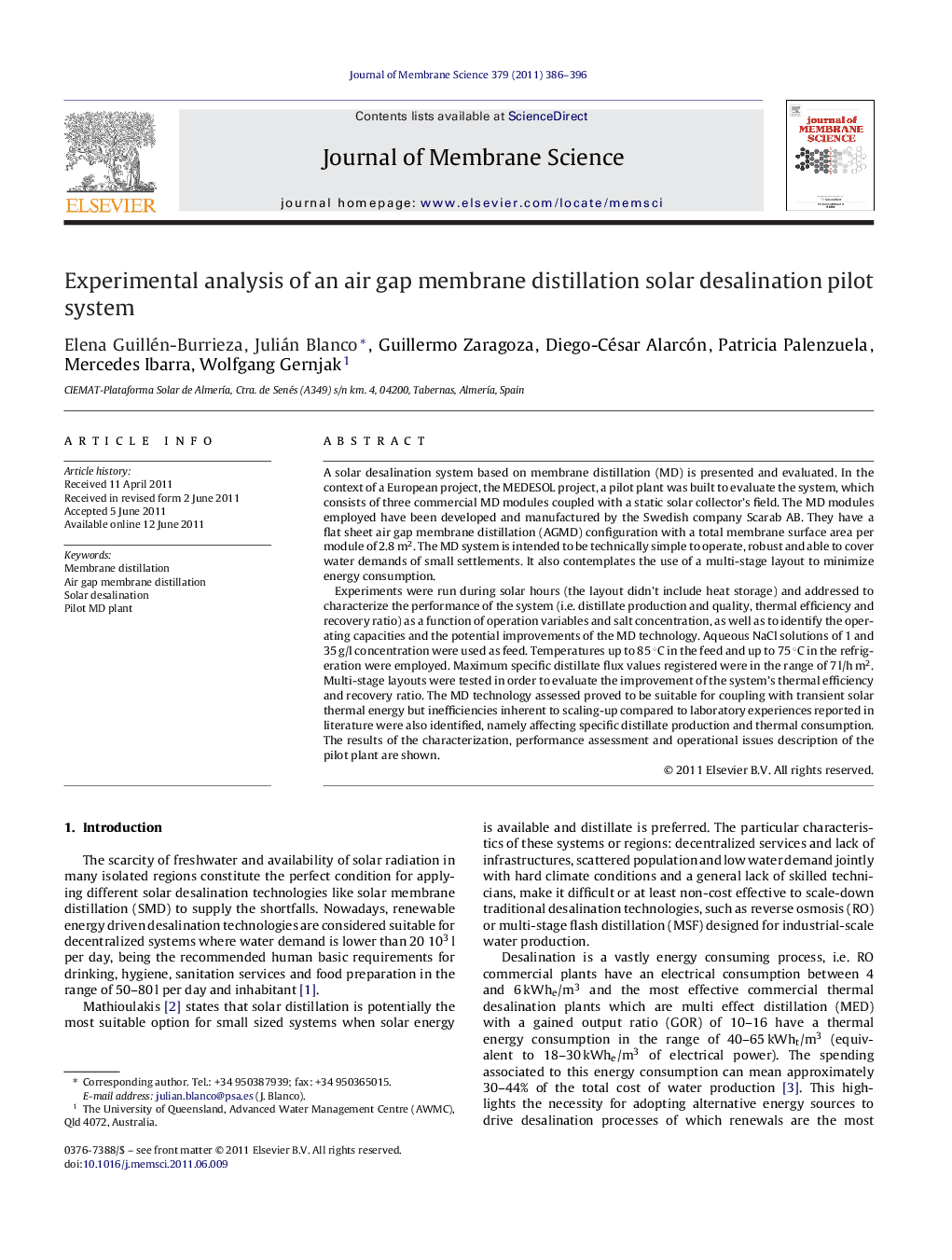| Article ID | Journal | Published Year | Pages | File Type |
|---|---|---|---|---|
| 635559 | Journal of Membrane Science | 2011 | 11 Pages |
A solar desalination system based on membrane distillation (MD) is presented and evaluated. In the context of a European project, the MEDESOL project, a pilot plant was built to evaluate the system, which consists of three commercial MD modules coupled with a static solar collector's field. The MD modules employed have been developed and manufactured by the Swedish company Scarab AB. They have a flat sheet air gap membrane distillation (AGMD) configuration with a total membrane surface area per module of 2.8 m2. The MD system is intended to be technically simple to operate, robust and able to cover water demands of small settlements. It also contemplates the use of a multi-stage layout to minimize energy consumption.Experiments were run during solar hours (the layout didn’t include heat storage) and addressed to characterize the performance of the system (i.e. distillate production and quality, thermal efficiency and recovery ratio) as a function of operation variables and salt concentration, as well as to identify the operating capacities and the potential improvements of the MD technology. Aqueous NaCl solutions of 1 and 35 g/l concentration were used as feed. Temperatures up to 85 °C in the feed and up to 75 °C in the refrigeration were employed. Maximum specific distillate flux values registered were in the range of 7 l/h m2. Multi-stage layouts were tested in order to evaluate the improvement of the system's thermal efficiency and recovery ratio. The MD technology assessed proved to be suitable for coupling with transient solar thermal energy but inefficiencies inherent to scaling-up compared to laboratory experiences reported in literature were also identified, namely affecting specific distillate production and thermal consumption. The results of the characterization, performance assessment and operational issues description of the pilot plant are shown.
► A solar desalination system based on membrane distillation is presented and assessed. ► Operation variables and salt concentration effects on its performance were evaluated. ► Multi-stage layouts to enhance thermal efficiency of the system were tested. ► Notable discrepancies with lab results attributed to scaling-up were identified. ► MD coupled with solar energy proved to be a suitable technology.
